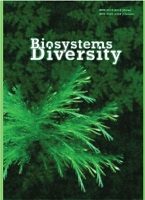Soil nematodes as a monitoring tool of bioenergy crop production management: The case of Miscanthus giganteus cultivation on different soil types
Soil nematodes as a monitoring tool of bioenergy crop production management: The case of Miscanthus giganteus cultivation on different soil types
Author(s): T. Stefanovska, A. Skwierzc, O. Zhukov, V. PidlisnyukSubject(s): Agriculture, Energy and Environmental Studies, Environmental and Energy policy, Environmental interactions
Published by: Дніпропетровський національний університет імені Олеся Гончара
Keywords: bioindication; abandoned lands; military influence; global climate change; energy security;
Summary/Abstract: The cultivation of bioenergy crops helps produce energy sources for industrial and domestic needs with a zero carbon footprint, which is very attractive in the context of efforts to prevent global climate change. However, this creates certain difficulties in terms of competition for agricultural land with crops used to satisfy human needs and produce food. One potential solution is the use of unproductive abandoned land disturbed by open-pit mining and marginal land contaminated with toxic substances for growing bioenergy crops. The subject of the study was to investigate the influence of soil type on nematode communities and related indicators in the cultivation of bioenergy crops for biofuel production in different geographical areas. A solution to the issue of the role of nematode communities in the hierarchical organisation of bioenergy crop management, which includes tactical and strategic levels, is proposed. A total of 44 nematode genera representing different soil types were found in the studied ecosystems. The lowest abundance of communities was found in Chernozem and Glayic Podzols. The highest abundance was found on Arenosols, Haplic Podzols, and Stagnic Fluvisols. The herbivores were represented by 21 genera. The proportion of herbivorous species usually did not exceed 60% of the total number of nematodes. The representatives of the genus Paratylenchus were found in all the studied soils. The results of multidimensional scaling showed that four dimensions could be identified. Dimension 1 proved to be the most sensitive to changes in the trophic structure of the communities, which is largely due to changes in the role of herbivores in the community. Dimension 2 allowed us to differentiate Arenosols from all other soil types. This difference is explained by functional changes in the structure of the nematode community. The Arenosols community is distinguished by an increase in the enrichment index, which is a consequence of an increase in the proportion of semi-endoparasites. Dimension 3 made it possible to differentiate a group of soils, including Haplich Fluvioglacial, Stagnant Fluvioglacial and Haplic Fluvisols, Stagnic Fluvisols, and Haplic Podzols from Glayic Podzols. Glayic Podzols are characterised by an increased total number of the community, mainly due to parasitic nematodes, as evidenced by the increased level of the plant parasitism index. Dimension 4 was able to capture the specific characteristics of the black soil nematode communities. This soil type is characterised by a higher density of nematode communities, which is explained by a higher proportion of bacteriophages and ectoparasites. Growing bioenergy crops has two different aspects: tactical and strategic. The tactical aspect involves the production of biological energy sources. This aspect includes traditional methods of crop management, including elements of plant disease and pest control, to achieve maximum yield. Thus, the object of tactical management is the plant. In contrast, the strategic aspect is concerned with soil reclamation to restore its functions, thereby paving the way for the possibility of using such soils for food production. The object of strategic management is soil. The tactical aspect involves obtaining direct economic benefits from the extraction of energy raw materials. The strategic aspect involves the restoration of disturbed lands and the creation of preconditions for the restoration of their ecosystem services and their inclusion in food production. Nematode communities can provide information for monitoring processes at both the tactical and strategic levels. The risks of parasitic nematodes and plant diseases should be assessed at the tactical level of management. At the strategic level of management, nematode communities should be used to monitor trophic network assessment and the level of stress in the soil system.
Journal: Biosystems Diversity
- Issue Year: 32/2024
- Issue No: 2
- Page Range: 217-224
- Page Count: 8
- Language: English

